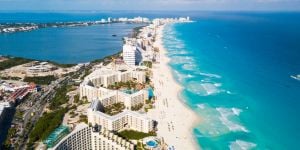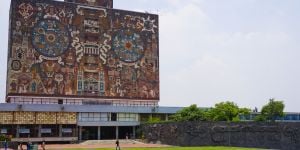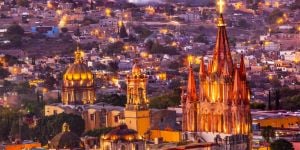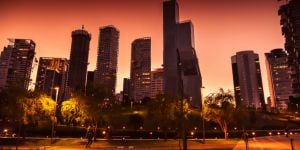Welcome to Expat-blog, Montgommery 
Places to visit in Mexico city:
1. Tula
To reach further back into Mexican history, visit the remains of the Toltec city of Tula, just an hour-and-a-half bus ride from the Terminal del Norte (Autobuses del Valle de Mezquital), then a cab from Tula de Allende, the modern town, will take you to the entrance. The most famous image of Tula is of the giant basalt figures standing on top of the Templo Tlahuizcalpantecuhtli or the Temple of the Morning Star. Known as the Atlantes they represent Quetzalcoatl as the morning star dressed as a Toltec warrior.
2. Teotihuacán
Situated 50km (30 miles) north of Mexico City is the archaeological zone of Teotihuacán, a UNESCO World Heritage spot. This site is thought to date from around 300-600 BC but the identity of those who built the place of the gods' still remains a mystery. Teotihuacán was a functioning city and one of the largest of the pre-industrial world. It was also one of the more politically dominant cities, owing to its strategic location in the Valley of Mexico, which provided easy access to trade routes and communication. In the seventh century AD, a fire and subsequent looting caused a great exodus of its inhabitants and Teotihuacán was left abandoned.
There are three main site areas: the Ciudadela (Citadel), Pirámide del Sol (Pyramid of the Sun), Pirámide de la Luna (Pyramid of the Moon) - all connected by the Calzada de los Muertos (Avenue of the Dead). To see the site properly takes between five and eight hours and it is open daily 0800-1700.
Buses marked Los Pirámides' depart from Gate 8 of the Terminal del Norte and take about an hour.
3.Paseo de la Reforma
Dubbed the Champs Elysées because of its Parisian-style architectural influences, the Paseo de la Reforma is Mexico City's main boulevard and most prestigious address. Running from Alameda to Chapultepec Park, it is lined with shops, offices, hotels, restaurants and some modern skyscrapers that are home to multinational corporations, financial institutions and foreign embassies. Monuments, fountains and statues of Mexican heroes also hem the route, built as a direct path for the Emperor Maximilian between the Centro Histórico and his palace in Chapultepec Park. Particularly worthy of note is El Monumento a los Heroes de la Independencia (Monument to Independence), or Angelito as it is affectionately known, a gilded statue of a winged Victory set atop a 46m-high (150ft) column. In 1956, the statue toppled to the ground in an earthquake, but was completely restored, much to the relief of the Mexican people. Displayed inside the monument is the skull of Hidalgo, the executed leader of a group of rebels who rose against the Spanish in October 1810 (open daily 0900-1700, free). To the south of the Paseo, bounded by Reforma, Sevilla, Avenida Chapultepec and Avenida Insurgentes Sur, is La Zona Rosa (Pink Zone), a busy shopping and entertainment district with many stores, restaurants and nightclubs.
Mexico city also has many interesting events taking place :
1.Day of the Virgin of Guadalupe
One of the many religious celebrations honouring the Virgin Mary. On the Day of the Virgin of Guadalupe, pilgrims from around the country converge at the famous basilica in Mexico City to pay their respects. The devotees come to the church to see the revered shroud which holds the image of Mary, which is on display here. Celebrations are also held in Puerto Vallarta and San Cristobal las Casas where Tzotzil and Tzeltal Indians dress in traditional costumes to pay their respects to the Virgin. The celebrations include special masses, fireworks, processions, parades and live music.
2. Semana Santa (Holy Week)
Crowds swell for this powerful re-enactment of the crucifixion when hooded penitents hobble on bloodied knees flagellating themselves.
This is to give you a basic idea of interesting places for sightseeing and events taking place there.
Hope it helps.
Regards,
Sheetul












